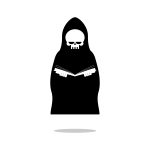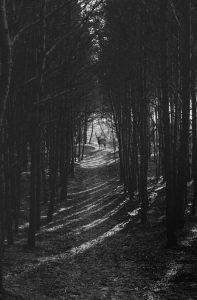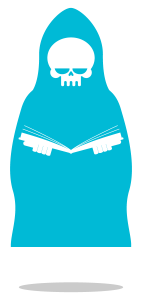I live by a nature reserve, a hill with jungle and flooded quarries. The monkeys that live there know our houses. They know our kitchens and the shelves where we keep the biscuits. Every so often, we’ll find a family of them sitting outside on our balcony railing, tails flicking, waiting for one of us to forget to slide the door all the way shut.
Of all the countries in jungle Asia (affectionate), Singapore is probably the least creaturey of all. We haven’t got the space for rurality. But it’s always fascinated me that even in a metropolis, creatures find their way. There’s otters swimming in storm drains, wild boars trundling along shopping malls, and yes, macaques in my living room stealing snacks. Singapore calls itself the City in a Garden, but I find a little more imagination in its jungle roots–more tangled, more feral, still fertile under the shiny first-world state. Something with bite, in a city that prides itself on keeping clean.
Animality, monstrosity, primitivity, nature; otherness and personhood; confrontation and coexistence. Thinking about creatures is often a circular to thinking about humans. As Premee Mohamed’s essay “How To Become A Creature” explores, ‘creature’ is usually defined in relation–‘creature’ as ‘not human’, rather than a thing in itself. Where do we as humans begin and end?
Creature is the instinctive part of ourselves, like grief in Elis Montgomery’s “the thing that leaps”. It’s the uncivilised natures we’re told should be chained and yet that we are compelled by and revel in: especially women, as in Briar Ripley Page’s dark wolf tale “Lupus in Fabula” and Nadaa Hussein’s revolutionary Sudanese queen “kan-da-ka”, or queer girls of colour who aren’t quite their aunties’ proper Christian daughters, made eldritch by Lynn D. Jung in “The Fall of Esther Park”.
The concept of creature is inextricable from structures of marginalisation, from the ways that humans categorise each other and the world around us. In “The Nigerian Nightmare”, Chinedu Gospel runs creaturehood as a state conferred by oppression and being turned into prey. It’s a state often upheld by patriarchy, imperialism, and military complexes, as in Louis Hall’s “Unit Six: Intro to Manticores”. And in Taylor Rae’s “The Greenhorn”, it’s a shunning we can unlearn, that adventurous and ambitious children can break inherited beliefs about. Ultimately, it’s a fluid, occasionally nonsensical classification even the philosophers have fought about, as Frank Podmore quips in “Love and Strife”.
I’m honoured to present this issue of Apparition Lit. Four stories, four poems, and an essay, lovingly leashed together by me and the ever-wonderful editorial team, presenting a range of voices with different takes on creatures and even several debut publications.
I hope you take something away. I hope something lingers. I hope something bites.
Wen-yi Lee is a Clarion West alum from Singapore and the author of forthcoming debut novel The Dark We Know (Gillian Flynn Books/Zando Young Readers, 2024). She’s also written about monstrous girls and creaturey outcasts in Nightmare, Strange Horizons, Uncanny and Tor.com, among others, and her work has appeared in anthologies such as Year’s Best Fantasy Vol 2 and We’re Here: The Best Queer Speculative Fiction 2022. She can be found on social media at @wenyilee_ and otherwise at wenyileewrites.com.
Apparition Literary Magazine is funded by our patrons, the editors, and by your kind donations. If you’d like to support us, you can follow us on Facebook or Twitter and please consider donating and/or subscribing via Patreon.
Thank you for reading
Rebecca Bennett, Amy Henry Robinson, Tacoma Tomilson, and Clarke Doty






